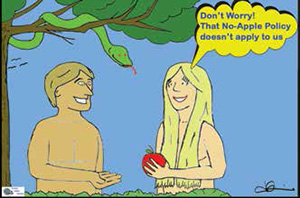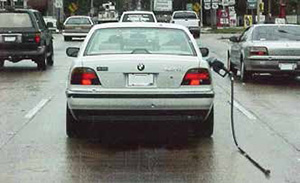
To Err is Human — But NOT With Aircraft


We humans have been making errors for a very, very long time and sadly will continue to do so.
In the past, when an error was made we (often including the person who made the error) would say they were either careless, stupid or just too lazy to do it right. Obviously they just didn’t use their common sense. All of the reasons we have listed are not causes of a human error.
For centuries we have been blaming human error but human error does not cause accidents. We can all agree that human error is never done with the intent to cause an accident. If it is, the correct term would be sabotage.
We have established that we don’t ever intend to cause an accident, so what is it that interfered with someone’s judgment or performance at that critical moment? The outcome of this is the error. Many people have bet their life (and lost) that the actions they were performing were the correct ones.
What can interfere with a person’s judgment or performance at a critical moment? Let’s take a look at the Dirty Dozen. They are lack of communication, lack of resources, complacency, pressure, lack of knowledge, lack of assertiveness, distraction, stress, lack of teamwork, lack of awareness, fatigue and norms.
For some, the notion that human error does not cause accidents will require a paradigm shift. A few will feel that we are just making excuses for a careless person and that he or she must be held accountable for their actions.
The good news is that we can do something about human error. We can learn how to avoid making errors or, at the very least, we can lessen the consequences when a mistake is made.
Here’s a simple error. Has anyone ever left their gas cap off after filling up with gas — or worse, drove off with the hose still attached as in the picture?

I recently went to the gas station to fill a gas can for my lawnmower. While there, I thought I might as well fill the truck’s tank, too. I filled the jerry can first and then the truck. While I was replacing the truck gas cap, my mind was on the jerry can and that I must not forget it. I picked it up and put it in the back of the truck and somehow managed to drive off without shutting the truck’s gas door. There was no intent to not close that door. Common sense says to close it before driving off and I think I have common sense. Why did I do it? Putting the gas in the back of the pickup was a distraction that occurred at a critical moment. I was also under some stress knowing I was running a little late to pick up my wife at the store. There were at least two of the Dirty Dozen preconditions in the works; I managed to not complete the job at hand. I made a human error.
lessening error recurrence
We often create new regulations to help prevent another from making the same error. An accident in a curve on a highway might result in the erection of a new sign indicating a curve ahead with a lower speed limit.
The second way we try to lessen errors is to “Murphy proof” the aircraft so the errors cannot be repeated. The gear up warning horn is a classic example of this. Today gas caps are attached so we can’t forget them and some cars have a warning light when the gas door is not closed. Notice in the photo, the fuel hose has a breakaway at the end of it so that the gas pump can’t be ripped off of its base. This would cause fuel to go everywhere with a high risk of an explosion.
We humans don’t always follow the rules and we are geniuses at finding ways around a Murphy proof. Thus we must train the person on how to avoid that error in judgment or performance.
justifying and learning from mistakes
Back in 1709, Alexander Pope said, “To err is human, to forgive divine.” We often use this quote to justify our mistakes. I would like to apply this 300-year-old quote to our modern-day profession of aircraft maintenance and see if we can try to lessen human error and forgive those who make the errors they don’t intend to make.
In its simplest form, and error is anything in which the result was not what you expected. Thus, if you are divorced, you made an error when you married. Interestingly, some of us go on to repeat the same error more than once. (Has anyone been divorced twice?)
In order to reduce human error, we have to learn from our mistakes. This can be an expensive way to learn, as it requires us to make an error before we react. Sadly, we don’t always learn the first time and instead blame the error on being careless, dumb or just too lazy to do it right. It can also come as a surprise when you make the same mistake again.
In order to learn from our mistakes, we have to first learn why we make them in the first place and what we can do to avoid making them again. With that understanding, we can begin to learn from the errors we have made. We can create a safety nets, a practice or procedure that we use to help ensure that an error is not repeated. For example, you decide to always leave your keys hanging on a special hook whenever you enter the house. This will lessen the chances of losing them somewhere. Better yet, let’s try to learn from the mistakes of others. This is a lot less expensive and often a lot less painful. In order to do this, we need to know about the mistakes, so they have to be reported and analyzed.
This is where the other half of Pope’s quotation comes into play: “To forgive (is) divine.” Giselle Richardson, a keynote speaker at a human factors symposium, informed our industry that, “only the Mafia with their cement boots have a harsher discipline policy.”
just culture
Often we will hide our errors or mistakes in fear of punishment. Most people will report their errors if they understand why they made the error and they trust the system will treat them fairly if they report them. In order for this to take place, there must be a just culture.
A just culture is one where any error or near miss will not result in discipline except in cases of recklessness or sabotage. Recklessness must be defined as a case of an error in which the person knew there was a significant chance that an error could occur and they chose to do it anyway.
These reported errors can now be analyzed (through risk analysis) and corrective actions can be put in place to eliminate or lessen the chance of the error reccurring. That is what a correctly-functioning Safety Management System will do. What we are talking about is actually really quite simple. We begin to sweat the small stuff so we don’t have to sweat the big stuff. We work, breathe and sweat the small stuff and with everyone’s participation our industry and the people in it will be safer.
Pope had it correct more than 300 years ago.
Gordon Dupont worked as a special programs coordinator for Transport Canada from March 1993 to August 1999. He was responsible for coordinating with the aviation industry in the development of programs that would serve to reduce maintenance error. He assisted in the development of Human Performance in Maintenance (HPIM) Parts 1 and 2. The “Dirty Dozen” maintenance Safety posters were an outcome of HPIM Part 1.
Prior to working for Transport, Dupont worked for seven years as a technical investigator for the Canadian Aviation Safety Board (later to become the Canadian Transportation Safety Board). He saw first hand the tragic results of maintenance and human error.
Dupont has held the position of principal of an aviation vocational training school as well as chief engineer for a corporate turbine aircraft. He has been an aircraft maintenance engineer and commercial pilot in Canada, the United States and Australia.
He is the past president and founding member of the Pacific Aircraft Maintenance Engineers Association. He is a founding member and a board member of the Maintenance And Ramp Safety Society (MARSS).
Dupont, who is often called “The Father of the Dirty Dozen,” has provided human factors training around the world. He retired from Transport Canada in 1999 and is now a private consultant.
Dupont has worked on and held signing authority on aircraft from the Piper Cub on floats through to the Boeing 74. He also owns a pile of hangar-stored parts that will one day fly again as a Stearman (if and when he retires).
He is interested in any work that will serve to make our industry safer. Visit www.system-safety.comfor more information.
